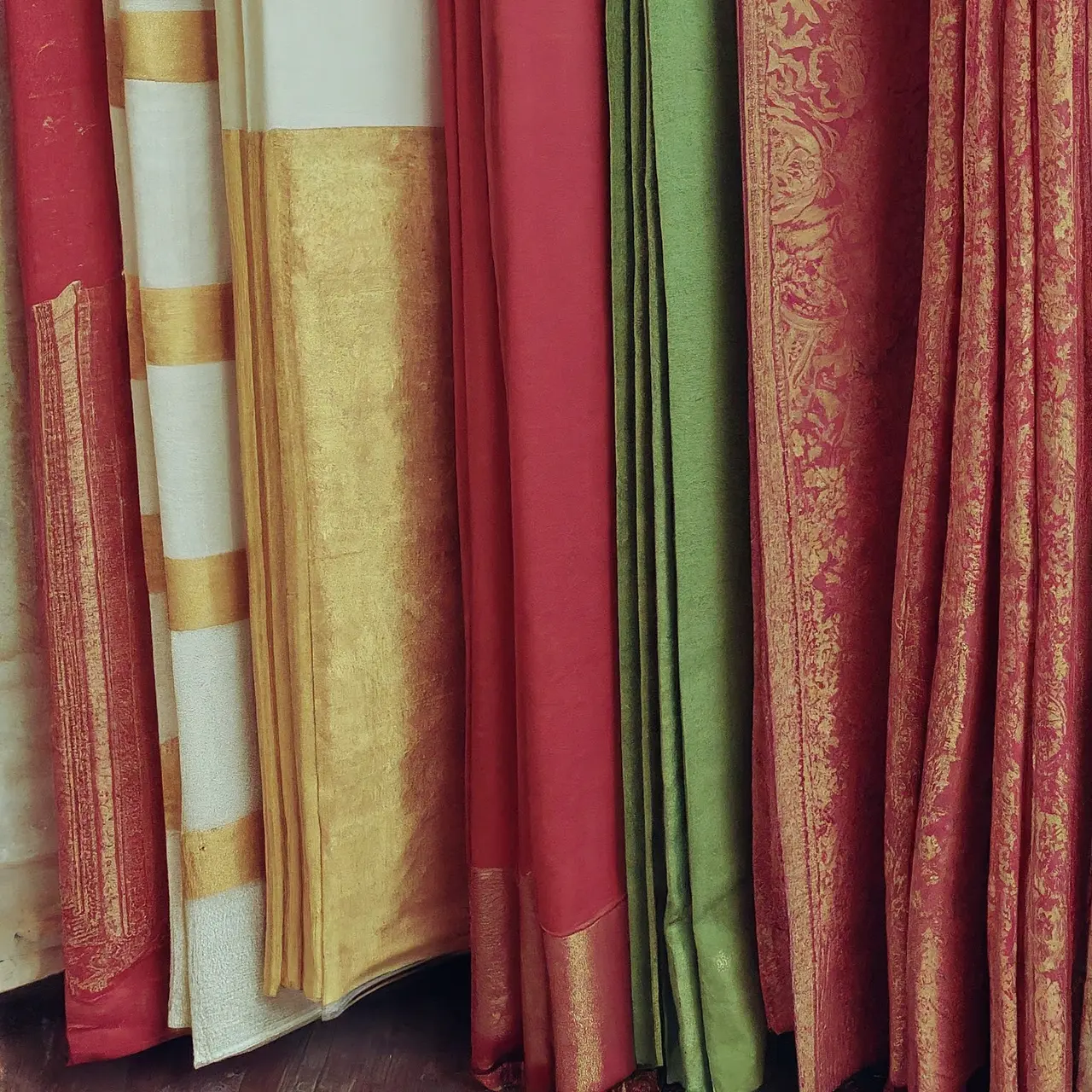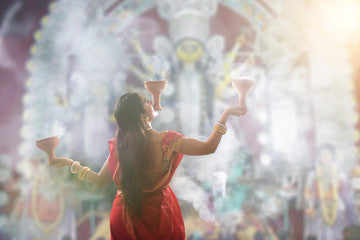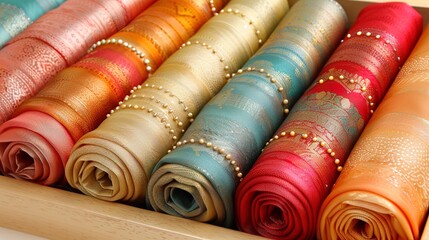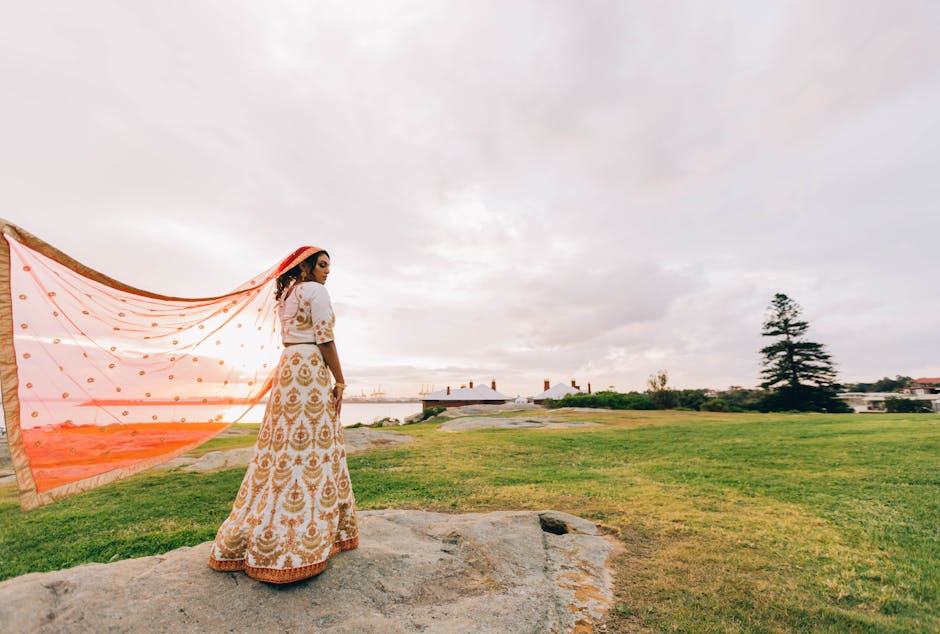15 Iconic Bengali Saris That Every Woman Should Know
Bengali saris, with their rich textures, vibrant colors, and intricate designs, hold a special place in the world of traditional attire. Perfect for every occasion, from daily wear to grand festivals, these saris are more than just garments; they are a celebration of culture, craftsmanship, and heritage. Let’s embark on a woven journey through the heart of Bengal, exploring the most iconic saris every woman should know about.
1. The Timeless Elegance of Tant
Originating from the Bengal heartland, Tant saris are a staple in the wardrobe of Bengali women, known for their lightness and breathability. These saris are traditionally woven from cotton, making them extremely comfortable for daily wear, especially during the sweltering summers. The artistry of Tant weavers lies in the delicate motifs and patterns interspersed across the fabric, often inspired by nature and daily life.
Despite its apparent simplicity, the elegance of a Tant sari comes from its intricate border and pallu designs, which can range from geometric patterns to floral and folk motifs. Each sari is a piece of art, telling its own story through its designs. Tant saris come in a flurry of colors, from the pastel shades that whisper of spring to the vibrant hues that shout of the summer festivals.
2. Baluchari: A Tale on Silk
Baluchari saris are a testament to the storytelling prowess of Bengali weavers. Originating from Bishnupur, in the Bankura district of West Bengal, these saris are distinguished by their intricate depictions of mythological scenes from the epics Mahabharata and Ramayana. Woven on rich silk, a Baluchari sari can take up to a week to complete, showcasing the dedication and skill of the artisans.
What makes Baluchari saris stand out is not just the stories woven into the fabric but the vibrant play of colors and the lavishness of its texture. These saris are often embellished with gold and silver threads, making them a preferred choice for weddings and special occasions. Owning a Baluchari sari is like owning a piece of art that carries the essence of Bengali culture.
3. Jamdani: The Loom of Luxury
Considered one of the finest muslin textiles of Bengal, Jamdani saris are renowned for their exquisite weave and feather-light quality. The technique of Jamdani weaving is a time-honored craft, recognized by UNESCO as an Intangible Cultural Heritage of Humanity. This sari boasts of patterns that seem to float on air, an illusion created by the painstakingly intricate weaving process.
Typically made on a loom, the sheer elegance of Jamdani saris is enhanced by the addition of floral or geometric motifs that are woven directly onto the fabric as it is being crafted. This process requires a high degree of skill and concentration, making each Jamdani sari a unique masterpiece. The rarity and beauty of Jamdani weave make it a coveted item among sari connoisseurs.
4. Kantha: Stitched with Stories
Kantha is not just a style of sari; it’s a canvas for storytelling, embroidered with threads of tradition. Originating as a form of upcycling old saris and dhotis, this embroidery technique has evolved into a sophisticated art form. Each Kantha sari tells a tale, narrated through intricate stitches that form motifs depicting nature, folklore, and everyday rural life.
The charm of a Kantha sari lies in its simplicity and the personal touch of the artisan. No two Kantha saris are the same, as each piece reflects the creativity and mood of the embroiderer. Today, these saris are prized for their craftsmanship and ethical appeal, embodying a blend of sustainability and heritage.
5. Muslin: The Lost Legacy
Once considered the pinnacle of luxury, with tales of its fineness and beauty reaching far corners of the ancient world, the art of making Muslin saris was nearly lost to time. Muslin, originating from the banks of the Ganges in Dhaka, was famed for its softness, lightness, and intricate handwoven patterns. Reviving this heritage, artisans are once again spinning tales in Muslin, trying to reclaim the lost glory of this fabric.
The contemporary Muslin saris, while paying homage to their illustrious past, are adapting to the modern world. Innovations in weaving techniques and designs are making Muslin saris more accessible to the current generation, blending the old with the new. A Muslin sari today represents resilience, the revival of a craft, and a nod to the grandeur of Bengali textile heritage.
6. Tussar Silk: Wild and Enchanting
Tussar Silk saris, with their distinctive texture and deep, natural hues, are a celebration of the wild silk produced by the larvae of several species of silkworms found in the forests of India. The raw beauty of Tussar silk, combined with traditional tribal motifs and hand-painted or block-printed designs, makes these saris stand out in the world of textiles.
The allure of Tussar silk lies in its organic look and feel, as well as its durability and comfort. These saris are suited for various occasions, making them a versatile addition to any wardrobe. The unique production process of Tussar silk, involving rural artisan communities, also contributes to the sari’s appeal as a symbol of sustainable and ethical fashion.






